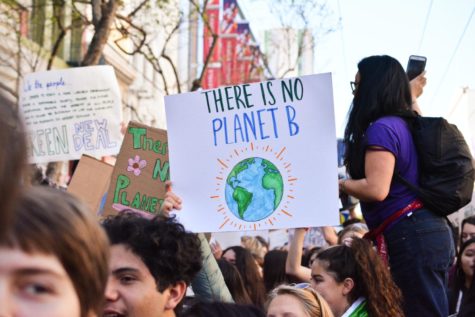HIV cure: present possibility or still decades away?
October 26, 2019
There have been many advances in the treatment of HIV, leaving the question, how close are we to a cure?
Human immunodeficiency virus (HIV) is a virus that attacks one’s CD4 cells, a type of white blood cells that moves around one’s body and detects faults and infections. After HIV infiltrates these cells, one’s T-cells weaken and their body becomes more susceptible to other diseases.
However, untreated, HIV can lead to Acquired Immunodeficiency Syndrome (AIDS)- a more serious version of HIV where the patient has significantly less white blood cells than the average person. This puts the patient at greater risk for infection and cancer. With all these dangers, scientists and doctors worldwide have been working on developing a cure, with hopeful results that indicate a possible treatment is in the near future.
In 2008, a successful cure was implemented on Timothy Ray Brown, later named the Berlin Patient. Brown was diagnosed with both Leukemia and HIV, with the corrective an accidental discovery. Originally looking for a blood cell donor to treat Leukemia, Brown was told to look for someone with CCR5 Delta 32, a mutation on their CD4 cells that makes them nearly immune to HIV.
After receiving transfusions for three months, HIV would no longer be found in Brown’s blood, pronouncing him as the first patient to be cured of HIV. CCR5 would go on to be continually researched for an HIV treatment. One known organization using CCR5 as its research base is “amfAR”- which aims to find a broadly applicable cure by 2020. amfAR believes this is possible because many past scientific obstacles have been eliminated, as shown in the Berlin patient. Although not developed yet, once created, scientists at amfAR will administer it and conduct many clinical trials. Nonetheless, scientists have admitted that a major obstacle in the upcoming year will be to find a cure that is effective on all strands of HIV.
Stony Brook University’s own Dr. Roy Steigbegel has cured 2 patients through this approach. However, he states that this treatment was only possible because the patients had cancer as well. He also declares that this therapy can be highly dangerous, and that the immunosuppression required for the bone marrow transplant nearly killed the patients.
Dr. Steigbegel recognizes that this “cure” would not be effective in all HIV patients with cancer because some HIV patients have a CCR5 receptor, which the regimen would be successful for, while other HIV patients have a CXC4 receptor instead. In which case, the blood absent of CCR5 from donors would no longer be adequate. Nevertheless, this is a viable option that could later be deemed a worthy cure.
Additionally, an HIV positive man is doing well after 19 months of receiving donor cells with genes edited using CRISPR. CRISPR is a family of DNA sequences that can destroy the DNA of viruses similar to those from which they are derived from. The patient who remains anonymous was diagnosed with HIV/AIDS in May 2016, and with Acute Lymphoblastic Leukemia a week later. He would receive the standard AIDS treatment, as well as chemotherapy for his Leukemia, his therapy was led by scientist Dr. Hongkui Deng. Here, Dr. Deng saw a chance to create a cure.
Based on past studies, Deng reasoned that if hematopoietic stem cells -stem cells capable of differentiating into any type of blood cells- with a natural CCR5 mutation can cure HIV, then maybe those with a CCR5 gene disrupted by CRISPR could do the same. Deng and his colleagues then edited the Hematopoietic stem cells from the bone marrow of a healthy donor, and administered the CRISPR molecules through electroporation, a method of creating minuscule openings in cells.
At first, only a small fraction of the cells was successfully edited. Before infusing the cells, the intended edited amount was 17.8% of the patient’s cells. However, once infused and tested in the patient, scientists found that only 5.2% to 8.28% of his bone marrow cells had the expected CCR5 edit. Deng acknowledged that there is a “low efficiency of gene editing” because there are only a small amount of cells that survive due to the immense amount of the unedited cells.
However, according to scientist Fyodor Urnov, this low response rate is due to the low knockdown rate of the CCR5 gene. Urnov claimed that the negative results achieved are not because of a wrong idea, but rather it is because the idea was applied to create an incorrect approach.
In another study done in 2014 by Sangamo Therapeutics, 11-28% of the cells were edited by CRISPR, with results showing patients producing their own CD4 cells, suggesting gene-edited cells were not only surviving, but that they were helping the patients produce their own healthy T-cells. Although announced a safe method, Sangamo decided to no longer pursue that program, instead focusing on studying sickle cell anemia.
Although deemed safe by Sangamo Therapeutics, the risks of gene editing through CRISPR should not be ignored. According to Dr. Deng, until further research is done, this treatment should not be applied unless the patient is already suffering from leukemia, in which case the hazards are less preventable because leukemia patients would be receiving the cell transplant anyway, so only the CCR5 knockdown would be different. However, the patient’s mere survival without contracting any cancer or genetic damage proves that CRISPR technology may be safe after all.
Although these methods seem very innovative, whether or not the treatments will be finished soon remains unanswered. Through taking antiretroviral treatment and regular testing, those with HIV can live a long and healthy life. Given this, whether or not patients will be willing to take the risk to participate in potentially life-threatening clinical trials also remains in question. With more research coming out, hopefully, a safe cure will be discovered for all in the near future. Unfortunately, as in most cases, only time will tell.











